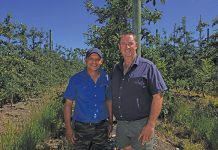It’s highly likely that interest rates will be increased by 100 basis points in June. That was the sentiment of economists following April’s producer price inflation (PPI) figures which rose to 12,4% year-on-year from March’s 11,9%. “Following Tito Mboweni’s comments recently about increasing interest rates by 200 basis points, we saw how serious he was about inflation targeting,” said Doret Els, an economist at the Efficient Group.
“But we can expect 100 basis points in June and likely 50 basis points again in August.” S tats SA credited the rate in April to the annual rate of change for mining and quarrying, which increased from 18,8% to 21%, as well as other sectors such as forestry (5,4% to 14,2%), electricity (5% to 11%), tobacco products (6,6% to 10,1%) and electrical, machinery and apparatus (5,8% to 6,4%). S
ectors that helped counteract the increase were agricultural products (from 16,3% to 9,7%) and water and gas (14,2% to 13,1%). “Because the new weightings include mining in the PPI, we’re a little circumspect about the figures for agriculture having come down because we feel they should have increased,” said Els. But the expected favourable maize harvest and high commodity prices have ensured that agriculture will probably maintain its overall gross domestic product growth of 3,5% this year, according to FNB chief economist Dr Cees Bruggemans. “But the accumulating weakness and no repeat of crop windfalls next year may mean as little as 2,5% GDP growth in 2009,” he said.
This would likely cause a slow-down in formal employment and lead to job losses. While the consumer price index minus mortgage costs (CPIX) has been above the Reserve Bank’s target of 3% to 6% since 2007 and is currently at 10,4%, Chris Hart, economist at Investment Solutions, said that it looked like inflation had not yet peaked and that interest rates would continue to increase, a sentiment shared by Bruggemans who said it may peak nearer to 12% later in the year.
“The good news is that the favourable harvest conditions have capped crop prices these past few months,” said Bruggemans, “But if these prices were to rise further globally, they could ultimately pull local agricultural prices up with them through export parity pricing. Good profit growth will be limited to the favoured few, such as mining and agriculture.” – David Steynberg
Does China really want African farmland?
Is China really encouraging its companies to buy up large tracts of farmland in Africa and South America? While Farmer’s Weekly was unable to get comment from China’s Ministry of Agriculture before going to press, the fact remains that China’s burgeoning population is fast running out of available arable land.
According to the Financial Times, China has about 40% of the world’s farmers, but only 9% of the globe’s arable land. And to ensure future food security, some Chinese scholars believe their agricultural companies must expand overseas “because our land resources are limited,” Jiang Wenlai of the China Agricultural Science Institute was quoted as saying. “It will be a win-win solution that will benefit both parties by making the maximum use of the advantages of both sides.” But while there may be opposition in to foreign landownership, other complications may make the scenario economically unviable.
At the beginning of May, Reuters cited obstacles such as the high costs of shipping produce back to China and the fact that the shipments would not necessarily be guaranteed import certificates or a ready market. Apparently, cheaper grain imports could be sourced by China on the open markets of Australia and the US.
“It’s the government’s policy to encourage all companies to go abroad, including agricultural firms,” said Xie Guoli, deputy director of the Agricultural Trade Promotion Centre at the Ministry of Agriculture. “But as far as I know, the government’s not working on any detailed plan to support such investment. It’s too early; we need to wait and see how the investments mature.” But while financial policies are discussed, millions of Africans continue to starve. “It’s not realistic to grow grain overseas, particularly in Africa and South America,” said Xie. “[With] so many people starving in Africa, can you ship the grain back to China?” – David Steynberg
Poachers sweep through Zambia’s parks
The Zambia Wildlife Authority (ZAWA) needs US$1,5 million for animal restocking in its national parks around the country, as heavy poaching decimated animal populations. o says ZAWA director-general Lewis Saiwana. He pointed out that illegal squatters in the Zambezi National Park were suspected of having been contributing to massive poaching operations. Dr Saiwana said the squatters had since been given until 30 June to vacate the area.
He added that as soon as they leave, ZAWA will be able to start restocking the park. – Bua News Zim undershoots wheat target Zimbabwe’s state media disclosed that only 13% of the planned winter wheat crop had been planted. he government had set a target of cultivating 70 000ha of winter wheat after forecasting that this year’s maize production would fall short of the national requirement by about 1 million tons. O nly 8 963ha of wheat has been planted, 53% less than in 2007. he cut-off date for planting to produce a successful winter harvest is usually 10 May. “We’ve missed the target due to challenges such as shortages of fertilisers and fuel, as well as frequent breakdowns of tillage facilities,” said agriculture minister Rugare Gumbo. – Irin News








